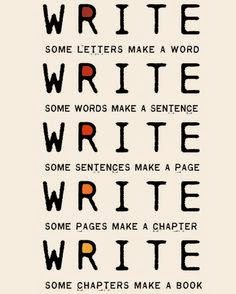
Guest Blogger Judy Croome: A Rose By Any Other Name (Or Branding Yourself)
October 23, 2014

 Literary genres would include poetry, playwriting, novels, with sub-genres such as epic and magical realism, historical and so on. Commercial fiction genres include romances, westerns, mysteries, sci-fi and so on.
Literary genres would include poetry, playwriting, novels, with sub-genres such as epic and magical realism, historical and so on. Commercial fiction genres include romances, westerns, mysteries, sci-fi and so on.



A Rose by Any Other Name
by Judy Croome

Walking into a grocery store to buy some butter, we go straight to the aisle
marked ‘Dairy’, choose the brand we prefer and head to the till to pay for it. Imagine how difficult shopping would be if we couldn’t name the item we wanted.
marked ‘Dairy’, choose the brand we prefer and head to the till to pay for it. Imagine how difficult shopping would be if we couldn’t name the item we wanted.
Shop assistant: ‘Can I help you?’
Me: ‘I’m looking for that yellow stuff.’
Shop assistant (looking a bit bewildered): ‘Yellow stuff?’
Me: ‘Yes, you know. It’s sometimes soft and sometimes hard. It can come in a tub or in a block.’
Shop assistant (sweating a bit and looking even more bewildered): ‘Can you be more specific?’
Me (having a bright idea): ‘It comes from cow’s milk.’
Shop assistant (looking relieved, rushes to a shelf and hands me a packet of cheese): ‘Is this what you’re looking for?’
Me (annoyed): ‘No, the other one.’
And so it would go on. With a name for what I want, the conversation would go like this:
Shop assistant: ‘Can I help you?’
Me: ‘I’m looking for butter.’
Shop assistant: ‘Under Dairy, in aisle 2.’
Me: ‘Thank you.’
Names, or labels, are a convenient way of categorising items into easily identifiable groups. It just makes life easier. The publishing industry is no different: to make its life easier it has a veritable smorgasbord of categories, except they’re, well, labelled as genres
and sub-genres.
and sub-genres.
There are two main classes of literature: fiction and non-fiction.
Concentrating on fiction, this is broken down into two main sub-groups: literary fiction versus commercial fiction. Each of those is further categorised into genres and still further into sub-genres.
 Literary genres would include poetry, playwriting, novels, with sub-genres such as epic and magical realism, historical and so on. Commercial fiction genres include romances, westerns, mysteries, sci-fi and so on.
Literary genres would include poetry, playwriting, novels, with sub-genres such as epic and magical realism, historical and so on. Commercial fiction genres include romances, westerns, mysteries, sci-fi and so on.Let’s break down the romance genre into some of its sub-genres. You’ll have, amongst others, Baby Love (heroines who are also single mothers; the hero accepts both mother and child); Contemporary (set in the present day, with modern cultural references, which quickly date the romance); Historical (set in a previous time period; can be Regency; Elizabethean; Scottish Mediaeval; American Civil War etc); Erotica (overt sexuality; can be hetero or homo-sexual); Family Sagas (tells the story of more than one generation in the same family); Inspirational (told from a Christian viewpoint, no explicit sex, this is the complete opposite to one of those action-packed https://www.fullhdxxx.com/ videos) and many more.
What exactly is genre fiction? It’s any novel that overtly and intentionally signals its generic identity in the clearest possible terms. While even literary fiction has its conventions, genre fiction implicitly (some would say explicitly) defines specific settings, roles, events, and values.
For example, a Louis L’amour western will usually be set west of the Missouri River, take place between about 1800 and 1890 and feature a rugged hero who always endures, facing down awful adversity. A Mary Balogh romance would usually be set in Regency England, have a well-mannered heroine and an aristocratic hero who eventually find true love together and live happily ever after.
Literary fiction emphasizes the prose itself. The tale’s subject can be mundane, but the protagonist lives an emotionally intense life and
plot is secondary to the character’s growth. Literary fiction can be thought of as having conventions of its own, such as the use of an elevated, poetic, or idiosyncratic prose style; or defying readers’ plot expectations; or making use of particular theoretical or philosophical ideas.
plot is secondary to the character’s growth. Literary fiction can be thought of as having conventions of its own, such as the use of an elevated, poetic, or idiosyncratic prose style; or defying readers’ plot expectations; or making use of particular theoretical or philosophical ideas.
In addition, it can be argued that all novels, no matter how ‘literary’, also fall within the bounds of one or more genres. Thus, while Jane
Austen’s Pride and Prejudice is a romance, it is also considered a classic literary work. Science fiction began with Jules Verne, although Mary Shelley is generally credited with having written the first ‘science fiction’ novel, Frankenstein. Horror stories and mystery stories can both be traced in large measure to Edgar Allan Poe. And yet, despite their clear links to one specific genre, in a bookstore you’d also find all of these authors shelved under the classics section, along with Jane Austen.
Austen’s Pride and Prejudice is a romance, it is also considered a classic literary work. Science fiction began with Jules Verne, although Mary Shelley is generally credited with having written the first ‘science fiction’ novel, Frankenstein. Horror stories and mystery stories can both be traced in large measure to Edgar Allan Poe. And yet, despite their clear links to one specific genre, in a bookstore you’d also find all of these authors shelved under the classics section, along with Jane Austen.
The danger of genres – or of categorizing a novel – is that some works just cannot be classified as one particular genre. As the publishing industry relies heavily on “labels” for marketing, this may make it difficult for an author who is not writing to specific generic conventions to find a publisher. There is a trend – some could argue it is in itself an evolving genre – called ‘interstitialliterature’,
which acknowledges that some literature falls between the borders of currently established genres, whether literary or commercial.
which acknowledges that some literature falls between the borders of currently established genres, whether literary or commercial.
As an author wanting to be published, then, it is ideal – but not essential – to identify strongly with one particular genre, for example, romance writing. Within that genre, you could concentrate on one of the sub-genres (romance: contemporary). It would, however, be a pity if you limit yourself to one genre only. Whether you are in the early stages of your writing career, or are already a multi-published author, there is no harm in trying out different genres. You may find your unique voice, or re-ignite your passion, if you cross over into another genre and experiment with its conventions and styles.
In terms of marketing your books and your ‘brand’, it’s often recommended that an author uses different pen-names if writing across
genre borders. But does a rose by any other name smell as sweet? Many authors who write in more than one genre or sub-genre tend to link their web-sites and blogs. How many romance readers don’t know that Nora Roberts and J.D. Robb are the same author writing in different genres? How many of them buy her novels because they like her writing voice, irrespective of the name she writes under?
genre borders. But does a rose by any other name smell as sweet? Many authors who write in more than one genre or sub-genre tend to link their web-sites and blogs. How many romance readers don’t know that Nora Roberts and J.D. Robb are the same author writing in different genres? How many of them buy her novels because they like her writing voice, irrespective of the name she writes under?
Ultimately, though, what’s important is that you, as author, know and understand the genre of each individual story you write. This story is a contemporary romance. That story will be a young adult paranormal. Stick to the conventions and values of that genre and then target the agents and publishers who specialise in it: they will recognise its scent and you will soon be A Published Author.
You can read more articles by Judy Croome on her website
Bibliography
Cudden, J.A. 1999. The Penguin Dictionary of Literary Terms and Literary Theory.
4th edition.
4th edition.
Abrams,M.A. 1988. A Glossary of Literary Terms. 5th Edition.
You May Also Like

Will Writing Help You Get Your Dreams?
August 21, 2009
There is Such as Thing As Great Fan Fiction Writing
December 9, 2013

